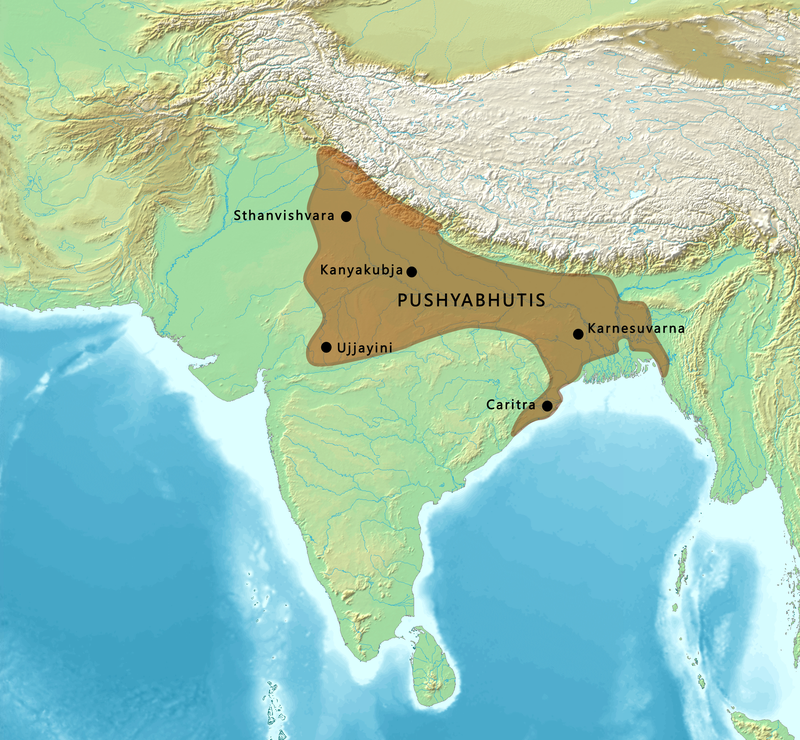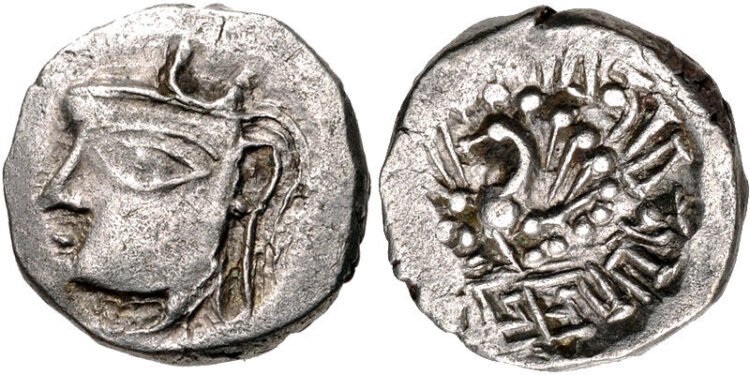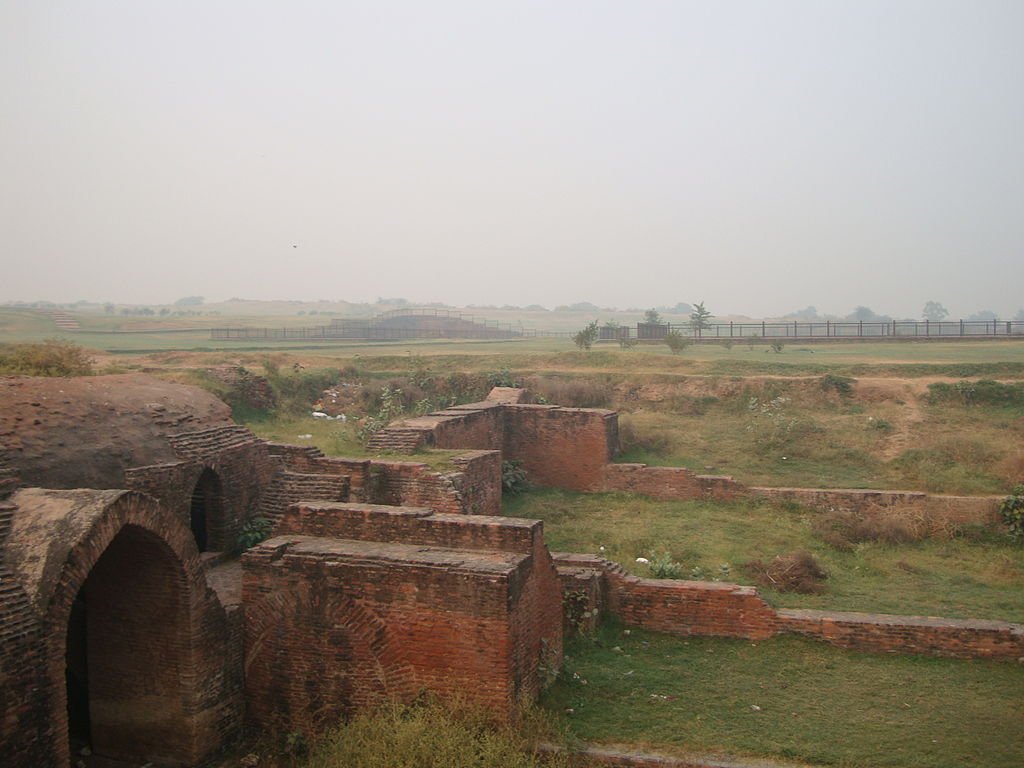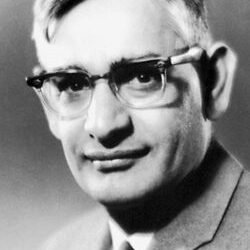Introduction
Harshavardhana (r. c. 606–647 CE), known as Śilāditya in inscriptions, rebuilt a northern empire after the Gupta decline by uniting the Ganga–Yamuna heartland with Kannauj as capital, projecting a model of statecraft that fused conquest restraint, federative alliances, and conspicuous public patronage of religion and learning. His reign is unusually well illuminated by courtly Sanskrit narratives (Bāṇa’s Harṣacarita), epigraphy, and the travelogues of Xuanzang (Hiuen Tsang), enabling a rare 7th‑century view of political geography, administration, economy, and plural religious life. Though checked by Pulakeśin II on the Narmada, Harsha secured the title “Lord of the North” (Sakalottarapathaśvara) by stabilizing the core, staging grand public assemblies, and endowing institutions like Nālandā—leaving a durable imprint on North Indian polity.

Political rise and consolidation
Harsha rose amid fracture. After Gupta power receded, the Pushyabhuti house of Thāneśvar (Thanesar, Haryana) expanded under Prabhākaravardhana, who faced Huna–frontier threats and cultivated prestige through marriage diplomacy, notably marrying his daughter Rājyaśrī to Grahavarman of the Maukharis at Kānyakubja (Kannauj). A succession crisis followed: Prabhākaravardhana died (c. 605), queen Yaśomatī committed sati, and crown prince Rājyavardhana was soon killed by treachery linked to Śaśāṅka of Gauḍa (Bengal) while campaigning against Malwa’s Devagupta. Harsha, encouraged by his maternal uncle and minister Bhāṇḍi, intervened decisively. He rescued Rājyaśrī from ritual self‑immolation in the Vindhyas, subsumed Kannauj, and shifted the royal seat from Thāneśvar to Kannauj, forging a broader legitimacy over the central Ganga plain. To outflank Gauḍa, Harsha struck an alliance with Bhāskaravarman of Kāmarūpa (Assam) and pressed eastward until Śaśāṅka’s retreat and eventual death enabled Gauḍa’s absorption. Westward, the Maitrakas of Vallabhi under Dhruvasena II acknowledged terms, with Harsha prudently reinstalling Dhruvasena to maintain a buffer rather than overextend. The expanding radius—north to the Himalayan piedmont, east to the Brahmaputra, and west to Gujarat’s doorstep—earned Harsha the style “Lord of the North,” even as the southern frontier remained contested.
Pulakeśin II and the southern check
Harsha’s southern ambitions met a defining limit at the Narmada. The Aihole inscription (Rāṣṭrakūṭa‑Kannada script, Sanskrit language) by Pulakeśin II’s court poet Ravikīrti recounts the Chalukya victory that checked Harsha’s southward thrust. While eulogistic, the record is consistent with North Indian sources that place Harsha’s authority north of the Narmada. The frontier settlement was pragmatic: the Narmada became a civilizational and administrative seam, with Harsha’s suzerainty running to its north and the Chalukyas consolidating the Deccan to its south. This balance allowed Harsha to redirect energies to governance, endowments, and interstate diplomacy without continuous southern attrition.
Administration and army
Drawing upon Mauryan and Gupta precedents while adapting to a more feudalized landscape, Harsha’s administration mixed royal centrality with provincial delegation. The king retained personal command and toured frequently; a mantri‑parishad headed by a chief minister coordinated portfolios such as war and peace (Avanti), elephants (Skanda‑gupta—title-like in function), military signaling (Siṅghanāda), and civil affairs (Sāmanta‑mahārāja). The realm was divided into bhuktis (provinces), subdivided into viṣayas (districts), down to villages as the basic administrative unit. Fiscal policy emphasized low nominal tax pressure (with bhāga commonly a fraction of produce, often framed as one‑sixth), supplemented by customs/tolls (śulka) and tribute from feudatories; grants in land and revenue immunities (via copper plates) remunerated officers and allied chiefs, encouraging loyalty but also embedding samanta (feudatory) structures. Xuanzang’s observations of repeated petty robberies on long routes show that policing outside core corridors was imperfect, yet overall road safety, judicial moderation, and accessible royal circuits maintained cohesion. The army was substantial: Harsha is credited with tens of thousands of infantry, a formidable elephant corps, and cavalry—sustained partly through land grants to feudatories obligated for military service.
Society and economy
Socially, the period shows a hardened caste order with birth‑based jātis, inter‑dining and inter‑marriage barriers, and the spread of untouchability in urban layouts. Elite women’s status had declined since the Gupta apex: child marriage grew, sati spread among upper strata (though Harsha prevented Rājyaśrī’s sati), and property rights narrowed. Yet prescriptions were unevenly enforced across regions and classes, and Xuanzang emphasizes a broadly “moral” populace and lenient penal culture. Economically, coin output appears modest compared to Gupta peaks; circulation leaned on copper‑plate land grants and regional media, pointing to a partially monetized but increasingly feudally mediated economy. Trade revived along secure trunk lines to Kannauj, Prayāga, and Vārāṇasī, while river routes underwrote grain and craft flows. Harsha’s lavish public giving at quinquennial assemblies strained treasury at intervals, but prestige returns—diplomatic, religious, and civic—bolstered regime legitimacy. Major urban centers included Kannauj (court/market), Prayāga (ritual/fair), and Vārāṇasī (Hindu scholastic hub).
Religion, tolerance, and public patronage
A Śaiva by origin, Harsha emerges in Xuanzang as a convinced patron of Mahāyāna Buddhism, without suppressing Śaiva–Vaiṣṇava cults or Jaina practices—a pluralism mirrored in endowments to temples, vihāras, and charitable facilities. He banned animal slaughter in many contexts, ordered compassionate treatment of living beings, and funded shelters, free kitchens, and dispensaries. His public religiosity culminated in two marquee institutions of generosity and debate: the quinquennial Prayāga Assembly and the Kannauj Assembly. At Prayāga (the confluence), scholars and representatives of multiple sects gathered for gifts, disputations, and redistribution; Harsha is portrayed as donating whatever remained in the treasury at the end of the cycle. The Kannauj Assembly (c. 643 CE) honored Xuanzang and aimed to popularize Mahāyāna, showcasing the court as an arena of philosophic debate and imperial charity. Critics later argued that extreme largesse strained fiscal reserves and contributed to post‑Harsha fragility; defenders counter that prestige and cohesion gains exceeded immediate costs.
Learning, literature, and Nālandā
Harsha authored three Sanskrit plays—Ratnāvalī, Priyadarśikā, and Nāgānanda—indicating literary self‑fashioning as a cultured monarch. His court poet Bāṇa composed Harṣacarita (a royal biography with ornate flourish) and the romance Kādambarī, both touchstones of classical Sanskrit prose. In higher learning, Nālandā—established in the Gupta age—reached full efflorescence under Harsha, drawing thousands of students and teachers from across Asia; Xuanzang studied there and later wrote its praises. Recognizing its scholarly and diplomatic capital, Harsha granted extensive land—tradition notes “100 villages”—to secure endowment revenues for maintenance, lodgings, and manuscripts. These centers embodied a “soft power” that linked diplomacy, scholastic reputation, and interregional networks.
Controversies and limits
Two recurring debates surround Harsha. First, varṇa identity: while Pushyabhutis are styled royal Kṣatriyas in courtly memory, some modern historians point to mixed or Vaiśya origins, reflecting fluid early‑medieval caste politics where Brahmanical legitimation often followed political success. Second, the “last great Hindu emperor” label: critics note that Harsha’s sovereignty was largely North Indian (excluding Kashmir and far western tracts), that he embraced Buddhist patronage alongside Śaiva identity, and that powerful Hindu polities rose later (e.g., Rajputs, Vijayanagara, Marathas). A more precise formulation views him as the last paramount North Indian monarch before the tripartite struggle era, whose balanced patronage and public ceremonies temporarily re‑centered imperial culture at Kannauj.
High‑yield anchors
Capitals and geography: Shift from Thāneśvar to Kannauj; core from the western Doab to eastern Ganga; influence to Brahmaputra; buffer arrangements with Vallabhi; frontier settlement at Narmada.
Key conflicts: Gauḍa–Malwa crisis; alliance with Bhāskaravarman (Kāmarūpa); southern check by Pulakeśin II per Aihole inscription.
Administration: King‑led tours; mantri‑parishad; bhukti–viṣaya tiering; land‑revenue share; low nominal tax pressure; samanta system via land grants; strong elephants/infantry.
Religion and culture: Śaiva roots, Mahāyāna patronage; animal‑slaughter restraints; public kitchens/dispensaries; Prayāga and Kannauj Assemblies.
Learning and literature: Harsha’s plays; Bāṇa’s Harṣacarita and Kādambarī; Nālandā endowed (“100 villages” tradition); Xuanzang’s residence and account.

Palace ruins at “Harsh ka tila” mound area spread over 1 km | Source: Wikipedia
Conclusion
Harshavardhana restored a northern imperial center after the Gupta collapse by combining timely force with layered alliances, ceremonials of generosity, and investments in learning that resonated far beyond his borders. Checked at the Narmada but unrivaled to its north, he stabilized corridors, endowed plural religious life, and turned Kannauj into a beacon of courtly and scholastic culture. If post‑Harsha fragmentation exposed the limits of a feudalizing revenue base, the reign nonetheless marks a culminating moment in early medieval statecraft—where conquest, compassion, and culture briefly aligned to reimagine kingship for a new age.





